Ch. 7 – The Nervous System
- Overview & Organization of the Nervous System
Functions of the Nervous System
The master controlling & communicating system of the body…
- Sensory input —gathering information
- To monitor changes occurring inside and outside the body
- Changes = stimuli
- Integration
- To process and interpret sensory input and decide if action is needed
- Motor output
- A response to integrated stimuli
- The response activates muscles or glands
- Structural Classification �of the Nervous System
- Central nervous system (CNS) – dorsal body cavity; integrating and command centers; interpret sensory information & give out instructions
Spinal cord
- Peripheral nervous system (PNS) – outside of CNS
- Nerves outside the brain and spinal cord
- Spinal nerves – carry impulses to and from spinal cord
- Cranial nerves – carry impulses to and from brain
- Functional Classification of �the Peripheral Nervous System
- Sensory (afferent) division
- Nerve fibers that carry information to the CNS
- Somatic sensory fibers – deliver impulses from skin, skeletal muscle, and joints
- Visceral sensory fibers (afferents) – deliver impulses from viscera
- Motor (efferent) division
- Nerve fibers that carry impulses away from the CNS
- Somatic (voluntary) NS – voluntary control of skeletal muscles
- Autonomic (involuntary NS – involuntary control of smooth & cardiac muscle and glands
- Divided into sympathetic and parasympathetic NS
Answer Did You Get It? #1
- Structure & Function of Nervous Tissue
- Support Cells
- Support cells in the CNS are grouped together as neuroglia (AKA glia or glial cells ) = “nerve glue”
- Functions: support, insulate, and protect neurons
- Cannot transmit nerve impulses (as can neurons)
- Never lose their ability to divide (as neurons do)
- Most brain tumors are gliomas
- Glia of the Central Nervous System:
- Ependymal cells
- Oligodendrocytes
- Glia of the Peripheral Nervous System:
- Schwann cells
- Satellite cells
Support Cells, continued…
- Abundant (~1/2 of neural tissue)
- Star-shaped cells
- Brace & anchor neurons to capillaries
- Form living barrier between capillaries and neurons (exchange) (blood-brain barrier)
- Control brain’s chemical environment
- Absorb leaked K + ions
- Absorb released neurotransmitters
- Spiderlike phagocytes
- Protect from infection
- Dispose of debris
- Dead brain cells & bacteria
- Line cavities of the brain and spinal cord
- Beating cilia circulate cerebrospinal fluid (CSF)
- CSF fills brain & spinal cord cavities & serves as cushion
- Wrap around nerve fibers in the CNS
- Produce fatty insulating coverings = myelin sheaths
- Protect neuron cell bodies
- Form myelin sheath around nerve fibers in the PNS
Answer Did You Get It? #’s 2-3
- Neurons = nerve cells
- Cells specialized to transmit nerve impulses from one part of body to another
- Two major regions of neurons:
- Metabolic center: contains nucleus, large nucleolus
- No centrioles = no mitosis
- Nissl substance = specialized RER
- Neurofibrils (intermediate cytoskeleton)
- Maintain cell shape
Neurons, continued…
- Processes outside the cell body
- Microscopic to 3-4 ft in length
- Longest = from lumbar region of spine to great toe
- Dendrites —conduct impulses toward the cell body
- A neuron may have hundreds
- Axons —conduct impulses away from the cell body
- Arises from cone-like region of cell body called axon hillock
- Collateral branches
- End in highly branched axon terminals
- Axon terminals contain vesicles with neurotransmitters
- Axonal terminals are separated from the next neuron by a synaptic cleft
- Synapse —junction between nerves ( syn = clasp/join)
Neuron processes, continued…
- Myelin sheath —whitish, fatty material covering axons
- Protects & insulates fibers
- Increases rate of nerve impulse transmission
- Schwann cells —produce myelin sheaths in jelly roll–like fashion
- Schwann cells in the PNS; oligodendrocytes in the CNS
- Neurilemma – portion of cell membrane on outer layer of coil where most of its cytoplasm resides
- Nodes of Ranvier —gaps in myelin sheath along the axon
- Aid in speeding up nerve impulses – saltatory conduction
- Homeostatic imbalance – multiple sclerosis = gradual destruction of myelin sheaths (become hardened = sclerosis), autoimmune disease (sheath protein)
- Visual & speech disturbances, loss of muscle control, increasingly disabled
- Interferon injections provide relief; no cure
- Terminology of Neurons
- Most neuron cell bodies are found in the CNS
- Nuclei —clusters of cell bodies within the white matter of the CNS (protected within the brain case and vertebral column)
- Ganglia —small collections of cell bodies in the PNS
- Tracts = bundles of nerve fibers in CNS
- White matter – myelinated tracts in CNS
- Gray matter —cell bodies and unmyelinated tracts in CNS
- Nerves = bundles of nerve fibers in PNS
- Functional Classification of Neurons
Direction of nerve impulse with respect to CNS
- Sensory (afferent) neurons
- Carry impulses from the sensory receptors to the CNS
- Ganglion outside of CNS
- Dendrite endings associate with receptors
- Cutaneous sense organs in muscles and tendons
- Proprioceptors —detect stretch or tension
Naked nerve ending; pain/temp
Meissner’s corpuscule: touch
Pacinian corpuscule: deep pressure
Golgi tendon organ & muscle spindle;: proprioception
Functional Classification of Neurons, continued…
- Motor (efferent) neurons
- Carry impulses from the central nervous system to viscera, muscles, or glands
- Cell bodies always in CNS
- Interneurons (association neurons)
- Connect sensory and motor neurons in neural pathways
- Structural Classification of Neurons
- Multipolar neurons—many extensions from the cell body
- most common
- Bipolar neurons—one axon and one dendrite
- Rare in adults
- Act in sensory processing – eye, nose
- Unipolar neurons—have a short single process leaving the cell body
- Divides into proximal (central) and distal (peripheral) processes
- Dendrites only at peripheral end
- Conducts action potentials both ways
- Found in sensory neurons of PNS ganglia
Answer Did You Get It? #’s 4-7
- Physiology of the Nervous System
- Functional Properties of Neurons
- Irritability - ability to respond to stimuli and convert to nerve impulses
- Conductivity - ability to transmit an impulse to other neurons, muscles, or glands
- Nerve Impulses
- Electrical conditions of a resting neuron’s membrane
- Polarized – resting/inactive neuron
- Fewer positive ions on inner face of plasma membrane than on outer face
- Depolarized – stimulated neuron
- More positive ions inside the cell than outside
Nerve Impulses, continued…
- Action Potential Initiation and Generation
- Stimuli excite neurons: light, sound, pressure, mostly neurotransmitters released by other neurons
- Cause a temporary change in the cell membrane’s permeability
- Stimulus causes sodium channel gates to open, and sodium to rush in
- Causes depolarization of the neuron’s membrane
- Inside more positive, outside less positive = graded/local potential
- If stimulus is strong enough, a long distance signal called an action potential or nerve impulse occurs
- Nerve impulses are all-or-nothing responses – they are either propagated over the entire axon or not at all
- Repolarization
- Membrane immediately becomes impermeable to sodium, but permeable to potassium ions
- K + ions rush out of the neuron, restoring electrical conditions to polarized = repolarization
- Repolarization must occur before another impulse can be conducted
- The sodium-potassium pump, using ATP, restores the original concentrations of Na + and K + .
- Saltatory conduction = In myelinated fibers, propagation occurs more quickly since the nerve impulse jumps from node to node.
- Homeostatic imbalance: factors that impair impulse conduction:
- Sedatives & anesthetics block sodium entry
- Cold & continuous pressure interrupt blood circulation (nutrients & O 2 ) – e.g. ice creates numbness, foot “goes to sleep”; prickly feeling caused by impulse transmission starting back up
- Transmission of the Signal at Synapses
- Neurotransmitter is released from vesicles within the axon terminal
- Neurotransmitter molecules diffuse across the synapse
- Neurotransmitters bind to receptors in the membrane of the next neuron
- If enough neurotransmitters are released, another nerve impulse will be generated in this neuron
- Enzymes remove the neurotransmitters from the receptors
- Impulse transmission is an electrochemical event – electrical along the neuron’s membrane; chemical within the synapses
Axon�terminal
Synaptic�cleft
Action�potential�arrives
Axon of�transmitting�neuron
Receiving�neuron
Neurotrans-�mitter is re-�leased into�synaptic cleft
Neurotrans-�mitter binds�to receptor�on receiving�neuron’s�membrane
Vesicle�fuses with�plasma�membrane
Synaptic cleft
Neurotransmitter�molecules
Ion channels
Receiving neuron
Transmitting neuron
Neurotransmitter
Neurotransmitter�broken down�and released
Ion channel opens
Ion channel closes
- Reflex — rapid, predictable, and involuntary response to a stimulus
- Always travel in one direction
- Occurs over pathways called reflex arcs
- Reflex arc — direct route from a sensory neuron, to an interneuron, to an effector
- Neural pathway involving the CNS and PNS
Stimulus at distal�end of neuron
(in cross section)
Interneuron
Sensory neuron
Motor neuron
Integration�center
Reflexes, continued…
- Types of Reflexes
- Somatic reflexes
- Reflexes which stimulate the skeletal muscles
- Example: moving hand away from a hot stove
- Autonomic reflexes
- Regulate the activity of smooth muscles, heart, and glands
- Examples: salivary reflex, pupillary reflex
- Regulate: digestion, elimination, blood pressure, and sweating
- Parts of a reflex arc
- Sensory receptor – reacts to a stimulus
- Integration center
- Effector organ – muscle or gland which is stimulated
- Patellar (knee-jerk) reflex is an example of a two-neuron reflex arc
Figure 7.11d
Figure 7.11b–c
Sensory (afferent)�neuron
Motor�(efferent)�neuron
Sensory receptors�(stretch receptors�in the quadriceps�muscle)
Effector�(quadriceps�muscle of�thigh)
Synapse in�ventral horn�gray matter
Inter-�neuron
Sensory receptors�(pain receptors in�the skin)
Effector�(biceps�brachii�muscle)
- Flexor (withdrawal) reflex is an example of a three-neuron reflex arc
- Withdrawal reflex arc has an interneuron
- The more neurons involved, the slower the communication because of the time it takes for neurotransmitters to diffuse
- Many spinal reflexes do not involve the brain
- Other reflexes require the brain to evaluate different types of information
- Reflex testing evaluates condition of the nervous system
- Exaggerated, distorted, and absent reflexes indicate nervous system disorders
Answer Did You Get It? #’s 8-11
- Central Nervous System (CNS)
- CNS develops from the embryonic neural tube
- Runs along the dorsal median plane
- 4 th week – anterior end expands = brain formation
- Rest of tube = spinal cord
- The central canal of the neural tube enlarges into 4 chambers = ventricles
- Filled with cerebrospinal fluid
- Functional Anatomy of the Brain
- ~3 lbs, wrinkled, texture similar to cold oatmeal
- 4 major regions:
- Cerebral hemispheres (cerebrum)
- Diencephalon
Regions of the Brain: Cerebrum
- Cerebrum (cerebral hemispheres)
- Paired, superior parts of the brain
- Includes more than half of the brain mass; obscures most of the brain stem
- The surface is made of ridges ( gyri = “twisters”) and grooves ( sulci = “furrows”)
- Fissures (deep grooves) divide the cerebrum into lobes
- Occipital lobe
- Temporal lobe
Figure 7.13b
- Cerebral Cortex
- Functions : speech, memory, logic, emotion, consciousness, sensation interpretation, & voluntary movement
- Cell bodies of neurons in cerebral cortex in outermost gray matter
- Primary somatic sensory area
- In parietal lobe posterior to central sulcus
- Receives & interprets impulses from the body’s sensory receptors
- Detects: pain, cold, light touch
Sensory & motor homunculus – the more neurons there are for a function, the larger the area represented by that body region
Figure 7.14
- Visual area in occipital lobe
- Auditory area in temporal lobe
- Olfactory area deep in temporal lobe
- Primary motor area in frontal lobe
- Conscious movement of skeletal muscle
- Axons of these motor neurons form the corticospinal or pyramidal tract
- Descends to spinal cord
- Broca’s area at base of precentral gyrus
- Involved in our ability to speak
- Only located in one (usually left) hemisphere
- Damage here can cause inability to speak – conscious of what you want to say, but unable to do it
- Frontal association areas – higher intellectual reasoning & socially acceptable behavior
- Complex memories stored in temporal and frontal lobes
- Speech/language (Wernicke’s) area – junction of temporal, parietal, & occipital lobes
- Allows us to sound out words
- Usually in just one hemisphere
- Damage: Wernicke’s aphasia – lack of language comprehension; clear speaking though
- Frontal lobes – language comprehension (word meaning)
- Gustatory area – taste – base of primary somatic sensory area (parietal)
- General interpretation area – temporal & parietal
- Cerebral White Matter
- White matter—fiber tracts carrying impulses to, from, and within the cortex
- Corpus callosum – large tract connecting hemispheres; allows hemispheres to communicate with one another
- Called commisures
- Association fiber tracts connect areas within hemispheres ; projection fiber tracts connect cerebrum to lower CNS centers
- Basal nuclei (basal ganglia ) — islands of gray matter buried within the white matter
- Regulate voluntary
motor activities
- Homeostatic Imbalance:
- Problems with basal
nuclei cause difficulty in
walking or other voluntary
movements: Huntington’s
disease & Parkinson’s
Answer Did You Get It? #’s 12-13
- Regions of the Brain: Diencephalon (Interbrain)
- Sits on top of brain stem; enclosed by the cerebral hemispheres
- Made of three parts: Thalamus, Hypothalamus, Epithalamus
- Thalamus – relay station for sensory impulses traveling up to sensory cortex
- Crude awareness of a pending sensation being pleasant or not
- Hypothalamus – floor of diencephalon
- Autonomic NS center: helps body temp, water balance, & metabolism
- Limbic system – “emotional-visceral brain” where thirst, appetite, sex, pain, and pleasure centers are
- Regulates the pituitary gland ; secretes hormones
- Mammillary bodies – reflex centers involved in olfaction
Regions of the Brain: Diencephalon
- Epithalamus
- Forms the roof of the third ventricle
- Houses the pineal body (an endocrine gland)
- Includes the choroid plexus —complex of capillaries which form cerebrospinal fluid
Regions of the Brain: Brain Stem
- Small: ~thumb in diameter & ~3” long
- 3 regions: midbrain, pons, & medulla oblongata
- Provides a pathway for ascending & descending tracts
- Contains nuclei with rigidly programmed autonomic behaviors necessary for survival
- Some connected to cranial nerves controlling breathing & blood pressure
- From mammilary bodies to pons
- Cerebral aqueduct – canal connecting 3 rd ventricle of diencephalon to 4 th ventricle
- Has two bulging fiber tracts — cerebral peduncles : convey ascending & descending impulses
- Mostly composed of tracts of nerve fibers
- Has four rounded protrusions— corpora quadrigemina (“gemini” = twins)
- Reflex centers for vision and hearing
- Pons (“bridge”)
- Rounded part of brain stem just below midbrain
- Mostly composed of fiber tracts
- Includes nuclei involved in the control of breathing
- Medulla Oblongata
- Most inferior part of the brain stem
- Merges into the spinal cord
- Includes important fiber tracts
- Contains nuclei which control:
- Blood pressure
- Fourth ventricle
- Reticular Formation
- Diffuse mass of gray matter along the length of the brain stem
- Involved in motor control of visceral organs
- Reticular activating system (RAS) plays a role in awake/sleep cycles and consciousness
- Damage here can cause a coma (permanent unconsciousness)
- Regions of the Brain: Cerebellum
- Cauliflower-like, dorsally projecting from under the occipital lobe
- Two hemispheres with convoluted surfaces
- Outer cortex composed of gray matter; inner region composed of white matter
- Provides precise timing for skeletal muscle activity and controls balance & equilibrium
- “Automatic pilot” – compares brain’s intentions with body’s actual performance; initiates appropriate corrective measures
- Ataxia – damage to cerebellum can result in clumsy & disorganized movements; appear to be drunk
Answer Did You Get It? #’s 14-16
- Protection of the Central Nervous System
- Nervous tissue is soft and delicate; neurons injured easily
- Brain and spinal cord protected by
- Scalp and skin
- Skull and vertebral column
- Meninges (membranes)
- Cerebrospinal fluid (watery cushion)
- Blood-brain barrier – protection from harmful substances in the blood
Figure 7.17b
- Connective tissue membranes which cover & protect the CNS
- Double-layered, outermost layer; leathery
- Periosteal layer (periosteum)—attached to inner surface of the skull
- Meningeal layer —outer covering of the brain; fuses with the dura mater of the spinal cord
- Layers are fused except in dural venous sinuses where venous blood is collected
- Inward folds attach brain to cranial cavity
- Falx cerebri & tantorium cerebelli
- Arachnoid mater (“spider”)
- Middle layer
- Attached to the pia mater, forming the subarachnoid space
- Filled with cerebrospinal fluid (CSF)
- Arachnoid villi – projections of arachnoid mater; protrude through dura mater
- CSF passes into dural sinuses through these structures
- Pia mater (“gentle mother”)
- Innermost membrane
- Clings tightly brain and spinal cord surfaces
- Epidural injections – “upon the dura”
- Homeostatic Imbalance :
- Meningitis – inflammation of the meninges
- Bacterial or vial infections
- Serious threat to brain if spreads into CNS
- Encephalitis – inflammation of the brain
- Diagnosed by sampling CSF
Cerebrospinal Fluid (CSF)
- Similar to blood plasma composition
- Less protein, more vitamin C, different ion composition
- Formed from blood by choroid plexuses
- Clusters of capillaries hanging from each of brain’s ventricles
- Forms a watery cushion to protect the brain from trauma
- Circulated in arachnoid space, ventricles, and central canal of the spinal cord
- CSF continually circulates in brain
- From two lateral ventricles, to 3 rd ventricle, through cerebral aqueduct, to 4 th ventricle
- Some CSF continues to spinal cord
- Normally circulates at a constant rate
- Changes to CSF composition may indicate meningitis, tumors, or MS
- Lumbar/spinal tap – sample the CSF
- Remain lying down for 12 hrs or “spinal headache”
- Homeostatic Imbalance - Hydrocephalus
- If something obstructs CSF drainage, it accumulates and exerts pressure on the brain
- “Water on the brain”
- Results in enlarged head in newborns with increasing brain size
- Would cause brain damage in adults
- Treated by surgically inserting a shunt (plastic drain); drains excess fluid into a vein
- Blood-Brain Barrier
- Brain is super sensitive to having a constant internal environment
- Neurons kept separated from bloodborne substances by the blood-brain barrier
- Composed of least permeable capillaries of the body
- Bound by tight junctions
- Allowed to enter:
- Water, glucose, and essential amino acids pass easily through
- Metabolic wastes (urea, toxins, proteins, most drugs), nonessential amino acids, K +
- Useless as a barrier against some substances
- Fats and fat soluble molecules
- Respiratory gases
Answer Did You Get It? #’s 17-19
- Traumatic Brain Injuries
- Head injuries are leading cause of accidental death in US; caused by damaging blow to head
- Further damage caused by brain ricocheting on opposite end of skull
- Slight brain injury
- Dizzy/”see stars,” briefly lose consciousness
- No permanent brain damage
- Marked tissue destruction occurs
- May remain conscious if cerebral cortex injury; may be in coma if brain stem is injured severely (especially RAS)
- Nervous tissue does not regenerate
- Intracranial hemorrhage
- Bleeding from ruptured vessels
- May cause death
- Cerebral edema
- Brain swelling from the inflammatory response
- May compress and kill brain tissue – neurological deterioration
- Cerebrovascular Accident (CVA/Stroke)
- 3 rd leading cause of death in US
- Blood circulation to brain is obstructed by a blood clot or ruptured blood vessel
- Brain tissue supplied with oxygen from that blood source dies
- Loss of some functions or death may result; undamaged neurons can spread into damaged areas and take over some lost functions (= neuroplasticity )
- Hemiplegia – one-sided paralysis ( e.g. right-sided paralysis = damage to left motor cortex)
- Apahsia – damage to language areas
- Motor/Broca’s aphasia – loss of ability to speak
- Sensory/Wernicke’s aphasia – loss of ability to understand written & spoken language
- Transient ischemic attack (ITA) – temporary restriction of blood flow (ischemia) to brain
- Last 5-50 min; numbness, temporary paralysis; impaired speech
- Warning of impending, more serious CVA
Answer Did You Get It #20
- The Terrible Three
- Alzheimer’s Disease
- Progressive degenerative brain disease, results in dementia (mental deterioration)
- Mostly seen in the elderly, but may begin in middle age
- Victims experience: memory loss, short attention span, disorientation, eventual loss of language, irritability, moodiness, confusion, sometimes violent, and ultimately, hallucinations.
- Structural changes in the brain include: low Ach, shrinking gyri, brain atrophy (especially in areas of thought and memory), abnormal protein (senile plaque – beta amyloid peptide ) deposits, and twisted tau fibers within neurons
- Treat with acetylcholinesterase inhibitors
- Parkinson’s Disease
- Problem associated with basal nuclei; cause not known
- Typically affects people in 50’s-60’s
- Degeneration of dopamine-releasing neurons in the substantia nigra, causing basal nuclei to become overactive
- Symptoms: persistent tremor (even at rest), head nodding, “pill-rolling” of fingers, forward-bent walking posture, shuffling gait, stiff facial expressions, difficulty in initiating movements
- Treatments: L-dopa for some symptoms (bad side effects); deprenyl to slow degeneration; thalamic stimulation via electrodes alleviates tremors; implants of embryonic tissue promising
- Huntington’s Disease
- Genetic disorder (dominant) – typically occurs at middle-age
- Massive degeneration of basal nuclei and later of the cerebral cortex
- Progressive symptoms: wild, jerky movements ( chorea ), later marked mental deterioration
- Typically fatal within 15 years
- Overstimulation of motor cortex
- Treat with drugs that block dopamine; fetal tissue implants are promising
- Spinal Cord
- 2-way conduction pathway to and from the brain
- Major reflex center (spinal reflexes)
- Extends from the foramen magnum of the skull to the first or second lumbar vertebra
- Cushioned & protected by meninges
- 31 pairs of spinal nerves arise from the spinal cord
- Cervical & lumbar enlargements – origin of upper & lower limb nerves
- Cauda equina (horse’s tail) is a collection of spinal nerves at the inferior end
Spinal Cord Anatomy
- Gray matter of Spinal Cord and Spinal Roots
- Gray matter surrounds the central canal (filled with CSF)
- Dorsal (posterior) horns – project posteriorly
- Contain interneurons
- Sensory neuron cell bodies in dorsal root ganglia ; enter spinal cord through dorsal root
- Anterior (ventral) horns – project anteriorly
- Motor neuron cell bodies in ventral horns; axons exit spinal cord through ventral root
- Homoeostatic imbalance – flaccid paralysis – damage to ventral root = no stimulation of muscles
- Spinal nerves – fusion of dorsal and ventral roots
- White matter of the Spinal Cord
- Myelinated fiber tracts (see 7.22)
- Dorsal, lateral, ventral columns
- Sensory/afferent tracts – conduct sensory impulses to brain
- Motor/efferent tracts – conduct impulses from brain to skeletal muscles
- Dorsal column tracts are all ascending carrying sensory input to brain
- Lateral & ventral tracts contain both ascending & descending tracts
- Homeostatic imbalance – spastic paralysis : transected (cut crosswise) or crushed spinal cord – affected muscles stay healthy b/c still stimulated, but moments become spastic; loss of feeling below injury
- Quadriplegic = 4 limbs affected
- Paraplegic = legs only
Answer Did You Get It? #’s 21-23
- Peripheral Nervous System (PNS)
- Nerves and ganglia outside CNS
- Structure of a Nerve
- Nerve = bundle of neuron fibers outside the CNS
- Neuron fibers are bundled by connective tissue
- Delicate endoneurium surrounds each fiber
- Groups of fibers are bound into fascicles by coarser perineurium
- Fascicles are bound together by tough, fibrous epineurium
- Forms cordlike nerve
Structure of a Nerve, continued…
- Nerves are classified according to the direction in which they transmit impulses:
- Mixed nerves – nerves with both sensory and motor fibers
- Sensory (afferent) nerves – nerves carrying impulses toward the CNS
- Motor (efferent) nerves – nerves carrying impulses away from the CNS
- Cranial Nerves
- 12 pairs of nerves that mostly serve the head and neck
- Only the pair of vagus nerves extend to thoracic and abdominal cavities
- Numbered in order; names typically match the structures they control
- Most are mixed nerves, but three are sensory only (optic, olfactory, & vestibulocochlear)
Cranial Nerves, continued…
- Olfactory nerve — sensory for smell
- Optic nerve — sensory for vision
- Oculomotor nerve — motor fibers to eye muscles (most movements, lens shape, & pupil size)
- Trochlear nerve — motor fiber to eye muscle (superior oblique)
- Trigeminal nerve — sensory for the face, nose, & mouth; motor fibers to chewing muscles
- Abducens nerve — motor fibers to eye muscles (lateral movement)
- Facial nerve — sensory for anterior taste buds; motor fibers for facial expression and lacrimal & salivary glands
- Vestibulocochlear nerve — sensory for balance and hearing
- Glossopharyngeal nerve — sensory for posterior taste buds; motor fibers to the pharynx (swallowing & saliva production); carotid artery pressure sensors
- Vagus nerves — sensory and motor fibers for pharynx, larynx, and thoracic & abdominal viscera (mostly parasympathetic = promote digestion & regulate heart activity)
- Accessory nerve — motor fibers to sternocleidomastoid & trapezius
- Hypoglossal nerve — motor fibers for tongue movements; sensory impulses from tongue
- O h O nce O ne T akes T he A natomy F inal V ery G ood V acations A re H eavenly.
- O nly O wls O bserve T hem T raveling A nd F inding V oldemort G uarding V ery S ecret H orcruxes
- Spinal Nerves & Nerve Plexuses
- There are 31 pairs formed by the combination of the ventral and dorsal roots of the spinal cord
- Named for the region from which they arise
- Spinal nerves divide after leaving the spinal cord
- Dorsal rami — serve the skin and muscles of the posterior trunk
- Ventral rami — for nerves T 1 -T 12 forms intercostal nerves (muscles between ribs & skin and muscles of anterior trunk); for rest of nerves forms a nerve networks ( plexus ) for limb sensory & motor
Answer Did You Get It? #’s 24-27
Spinal Nerves & Nerve Plexuses, continued…
- Cervical plexus – from C 1 –C 5 ventral rami
- Phrenic nerve – diaphragm; shoulder/neck muscles
- Brachial plexus – from C 5 –C 8 and T 1 ventral rami
- Axillary nerve – deltoid muscle, shoulder skin; superior thorax muscles & skin
- Radial nerve – triceps & extensor muscles; upper limb posterior skin
- Median nerve – flexor muscles; forearm skin; some hand muscles
- Musculocutaneous nerve – arm flexor muscles; lateral forearm skin
- Ulnar nerve – some forearm flexor muscles; wrist & hand muscles; hand skin
- Lumbar plexus – from L 1 –L 4 ventral rami
- Femoral nerve – lower abdomen , hip flexors & knee extensors; leg & thigh anteromedial skin
- Obturator nerve – adductor & small hip muscles; medial thigh & hip joint skin
- Sacral plexus – from L 4 –L 5 and S 1 –S 4 ventral rami
- Sciatic nerve – largest nerve in body; splits into two nerves; lower trunk & posterior thigh surface (hip extensors & knee flexors)
- Common fibular nerve – lateral leg & foot
- Tibial nerve – posterior leg & foot
- Superior & inferior gluteal nerves – gluteal muscles
Distribution of Major Peripheral Nerves of the �Upper and Lower Limbs
Spinal Nerve Plexuses
Autonomic Nervous System (AKA Involuntary NS)
- Motor subdivision of the PNS
- Controls body activities automatically
- Special neurons that regulate cardiac muscle, smooth muscle (visceral organs & blood vessels), and glands
- Helps to maintain homeostasis – constantly makes adjustments to keep internal conditions stable
- Consists only of motor nerves
Note the differences between ANS & SNS
Autonomic Nervous System, continued…
- Somatic vs. Autonomic nervous systems (both PNS)
- Different effector organs and neurotransmitters
- Somatic NS has cell bodies in CNS and an axon that extends to the effector organ
- Autonomic NS has a chain of two motor neurons
- Preganglionic axon – 1 st neuron; in the CNS (“before the ganglion”)
- Postganglionic axon – 2 nd neuron; outside of CNS; goes to organ
- Two divisions of ANS
- Sympathetic & parasympathetic division
- Regulate the same organs, but with opposite effects (counterbalance one another)
- Sympathetic division – mobilizes body during extreme situations (“fight vs. flight”)
- Parasympathetic division – rest and digest; unwind & conserve
Brain & Spinal Cord Cranial & Spinal Nerves
Sensory Division Motor Division
(Periphery → CNS) (CNS → Periphery)
Afferent/Incoming Efferent/Outgoing
Cranial Spinal Somatic Motor NS Autonomic NS
Nerves Nerves Voluntary Involuntary
Sympathetic Parasympathetic Enteric
Stimulatory Inhibitory GI
- Anatomy of the Parasympathetic Division
- Originates from brain nuclei of cranial nerves (III, VII, IX, & X) and S 2 -S 4
- AKA craniosacral division
- Cranial neurons synapse with ganglionic motor neuron in terminal ganglia (basically are at the effector organs)
- Sacral preganglionic neurons form pelvic splanchnic nerves (pelvic nerves) – pelvic cavity
- Always uses acetylcholine as a neurotransmitter
- Anatomy of the Sympathetic Division
- Originates from gray matter in spinal cord from T 1 through L 2
- AKA thoracolumbar division
- Ganglia are at the sympathetic trunk (near the spinal cord)
- Short pre-ganglionic neuron and long post-ganglionic neuron transmit impulse from CNS to the effector
- Norepinephrine and epinephrine are neurotransmitters to the effector organs
- Sympathetic Functioning —“fight or flight”
- Response to unusual stimulus
- Takes over to increase activities
- Remember as the “E” division
- Exercise, excitement, emergency, and embarrassment
- Homeostatic Imbalance – excessive sympathetic NS stimulation
- Type A personality – never slows down; may be susceptible to heart disease, high blood pressure, ulcers
- Parasympathetic Functioning —“housekeeping” activites
- Conserves energy (rest & digest)
- Maintains daily necessary body functions
- Remember as the “D” division
- digestion, defecation, and diuresis
Answer Did You Get It? #’s 28-30
- Tracking Down CNS Problems
- EEG – electroencephalography
- Recording of brain neuron’s electrical impulse transmission
- Attach electrodes on scalp
- Record speed of brain waves (unique to each individual)
- Alpha = awake, relaxed state
- Beta = awake, alert state
- Theta = common in children, not normal adults
- Delta = deep sleep
Tracking Down CNS Problems, continued…
- CT, MRI & PET scans
- CT (computed axial tomography) & MRI (magnetic resonance imaging) – easily identify tumors, intracranial lesions, MS plaques & areas of dead brain tissue (infarcts)
- PET scans – localize lesions that cause epileptic sezures; used for Alzheimer’s diagnosis, and in cancer tumor activity
CT Scan: normal vs. tumor
PET Scan: normal vs. Alzheimer’s disease
- Cerebral angiography
- Used to visualize arteries in brain
- Used to guide a catheter carrying clot-busting drugs (tPA)
Cerebral angiogram showing an aneurism
87-year-old man with acute onset left hemiplegia. . The image on the left (A) obtained preoperatively. The image on the right (B) was obtained after intra-arterial thrombolysis.
- Development Aspects of the Nervous System
- The nervous system is formed during the first month of embryonic development; therefore, any maternal infection can have extremely harmful effects
- Maternal measles (rubella) = deafness
- Lack of O 2 for minutes can cause neuron death
- Smoking decreases amount of O 2 in blood; less O 2 to developing fetus’s brain (potentially brain damage)
- Radiation & drugs (alcohol, opiates, cocaine, etc.) can all damage fetal nervous system development
- Homeostatic imbalances :
- Cerebral palsy – poor control and spastic movements of voluntary muscles, seizures, mental retardation, impaired hearing & vision
- Can be caused by lack of O 2 during difficult delivery
- Anencephaly – failure of the cerebrum to develop; cannot hear, see, or process sensory inputs
- Spina bifida – “forked spine”; vertebra fail to completely form; can result in varying degrees of paralysis & loss of bowel and bladder control
Development Aspects of the Nervous System, cont’d
- The hypothalamus is one of the last areas of the brain to develop (regulates body temperature_
- Premature babies can’t thermoregulate well
- Continued growth & maturation of nervous system through childhood
- Myelination: cranial to caudal; proximal to distal
- Brain is maximum weight as young adult
- Neurons then continue to get damaged and die
- Steady decline of brain weight and volume
- Can still learn throughout life; unlimited neural pathways available
- Sympathetic NS becomes less efficient (especially in constricting blood vessels)
- Orthostatic hypotension – pooling of blood in the feet due to lack of activation of vasoconstrictor fibers and lightheadness; common in elderly when they stand up quickly
- Arteriosclerosis (plaque build up in arteries) and high blood pressure result in less O 2 supply to brain
- Can causes senility – forgetfulness, irritability, confusion, and difficulty in concentrating and thinking clearly
- Some drugs, low blood pressure, constipation, poor nutrition, depression, dehydration, and hormone imbalances can cause “reversible senility”
- Professional boxers (& other high impact sports) and chronic alcoholics hasten the effects of aging on the brain
- “Punch drunk” – slurred speech, tremors, abnormal gait, dementia in retired boxers
- Reduced brain size in both
Answer Did You Get It? #’s 31-32

- Nervous System Template
The nervous system is responsible for establishing signals between the brain and the entire human body of living beings. This is why humans and animals can perform activities such as breathing, running, playing, thinking, reasoning and many more functions like these. The best option to teach and show this topic, is with the use of the human nervous system template in a presentation dedicated to students, teachers and everything related to academia.
Our nervous system template for PowerPoint and Google Slides brings a great list of editable vectors and high quality images inspired by human anatomy. It comes with 34 professional slides, these are of great help if you have a lot of content, as they all receive perfectly any information. If you want to make efficient presentations in record time, just download this free ppt resource and instantly apply its compatibility with Canva and other online platforms.

Free Nervous System Template for PowerPoint and Google Slides
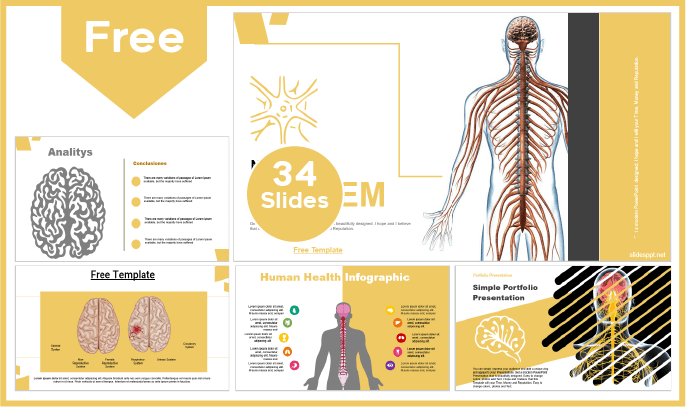
Main features
- 34 slides 100% editable
- 16:9 widescreen format suitable for all screens
- High quality royalty-free images
- Included resources: charts, graphs, timelines and diagrams
- More than 100 icons customizable in color and size
- Main font: Arial
- Predominant color: Beige
Download this template
Biology is immense, as it contains several branches dedicated to studying something specific. Thinking about that, we created a category of Google Slides themes and biology PowerPoint templates, where you can search and find all kinds of professional, customized, free, editable and educational designs related to these sciences.
We use cookies to improve the experience of everyone who browses our website. Cookies Policy
Accept Cookies
Home PowerPoint Templates Shapes Anatomy of Human Nervous System Slide Design for PowerPoint
Anatomy of Human Nervous System Slide Design for PowerPoint
Create a highly informative and academic presentation using the Anatomy of Human Nervous System Slide Design for PowerPoint . The detailed graphics and useful descriptions allow the presenter to show a professional presentation for medical analysis and biological education.
The human nervous system is widely considered as the most important biological system in the human body. It allows the movement of the limbs, retention of memory, regulation of involuntary reactions, and governs almost every other bodily function. By presenting this information, the management of a company – possibly specializing in pharmaceuticals and medical equipment – can evaluate its different projects and research to align with sound scientific studies. In addition, it informs members that are not medically inclined so that the team can have a common ground on the topic.
Using the presentation design, the user can highlight the different nerves involved in the nervous system. Additionally, the slides allow for the demonstration of two sets of nerves, namely, the sympathetic, and the parasympathetic nerves. The available diagrams are useful for presenting the physical locations of these nerves, as well as their various uses and functions in the nervous system.
The PowerPoint template contains a detailed drawing of the nervous system, shown in three of the four slides. The first of these slides highlights the drawing in orange. This slide features the parasympathetic nerves that are related to rest and digestion. Minimalist vector icons can be found on both sides of the diagram. These icons represent different organs such as the stomach, the lungs, the heart, eyes, the large intestine, and the bladder. Beside these icons are descriptions of the effects on these organs, during the function of this specific set of nerve including the spinal nerve.
Another slide, representing the sympathetic nerves, contains the same diagram, but with additional icons. The icons and corresponding text placeholders reflect the effect of these nerves on the specific organs. One of the slides includes a gray version of the nervous system diagram. Brackets divide the nervous system into certain categories, such as cranial nerves, cervical nerves, thoracic nerves, lumbar nerves, and sacral nerves.
Perfect for medical demonstrations, the Anatomy of Human Nervous System Slide Design for PowerPoint contains creative PowerPoint icons that can be copied and pasted onto other slide designs for ease of presentation. The presenter can edit the position or arrangement of the PowerPoint icons depending on his preference. Any modification will not affect the image resolution of the design.
You may also like:
- Human Internal Organs PowerPoint Icons
- Medical Diagram Slide Design for PowerPoint
- Anatomy of the Human Tooth PowerPoint Shapes
- Anatomy of the Human Heart PowerPoint Shapes
- Human Anatomy Ear PowerPoint Shapes
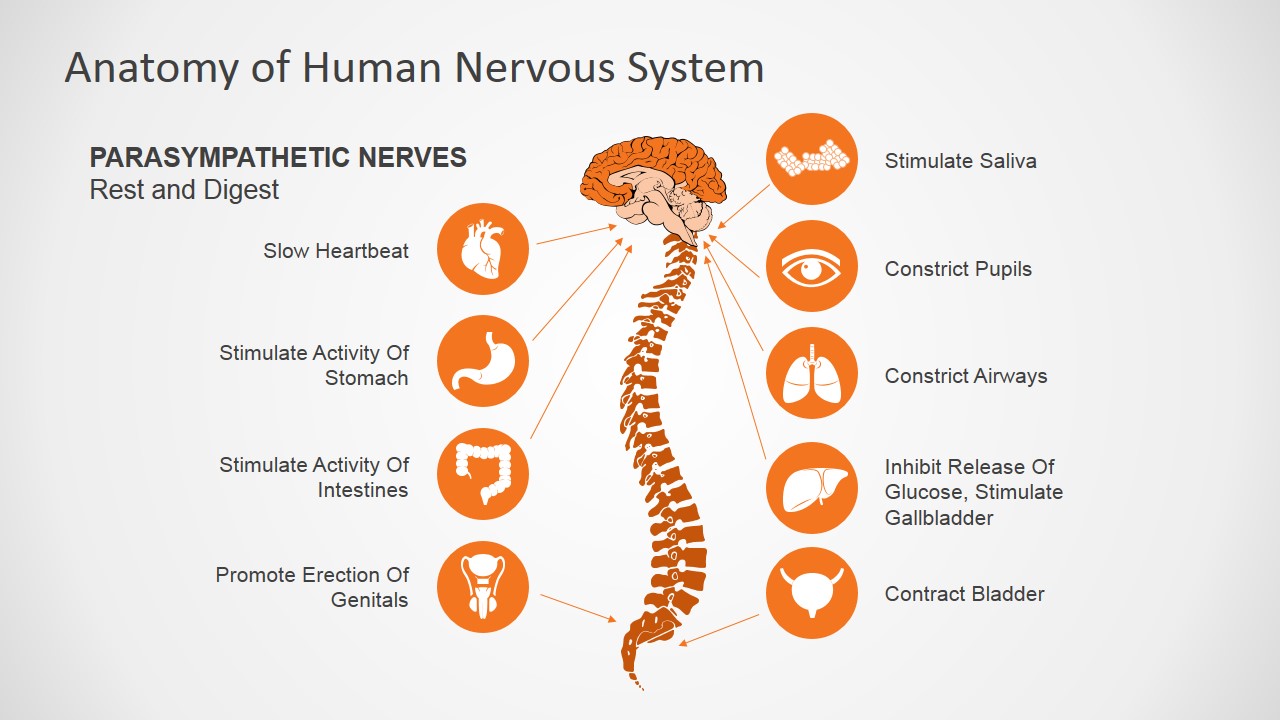
You must be logged in to download this file.
Favorite Add to Collection
Details (4 slides)

Supported Versions:
Subscribe today and get immediate access to download our PowerPoint templates.
Related PowerPoint Templates
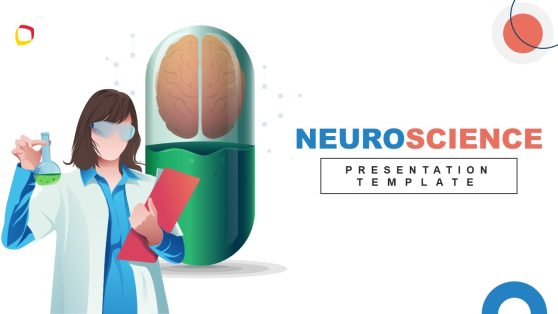
Neuroscience PowerPoint Template
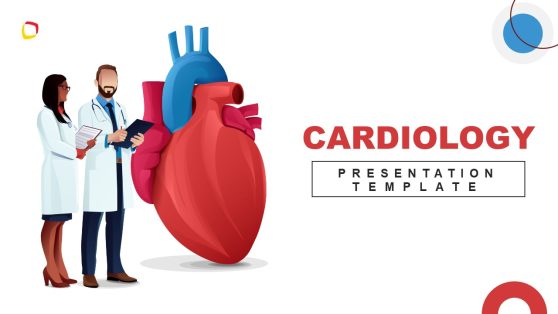
Cardiology PowerPoint Template
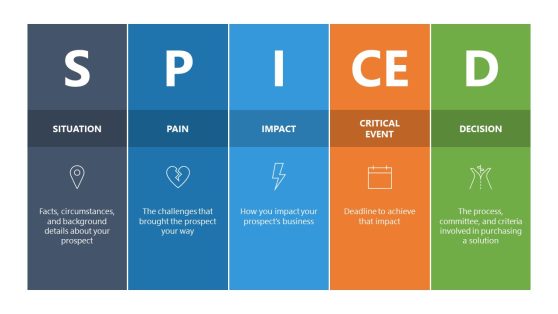
SPICED PowerPoint Template
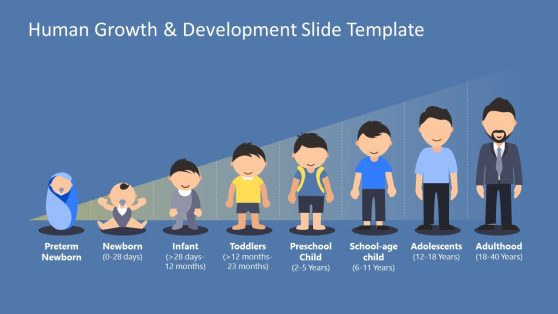
Human Growth & Development PowerPoint Template
- Ultimate Combo

- Sign Out Sign Out Sign In
70 Best Nerve-Themed Templates for PowerPoint & Google Slides
With over 6 million presentation templates available for you to choose from, crystalgraphics is the award-winning provider of the world’s largest collection of templates for powerpoint and google slides. so, take your time and look around. you’ll like what you see whether you want 1 great template or an ongoing subscription, we've got affordable purchasing options and 24/7 download access to fit your needs. thanks to our unbeatable combination of quality, selection and unique customization options, crystalgraphics is the company you can count on for your presentation enhancement needs. just ask any of our thousands of satisfied customers from virtually every leading company around the world. they love our products. we think you will, too" id="category_description">crystalgraphics creates templates designed to make even average presentations look incredible. below you’ll see thumbnail sized previews of the title slides of a few of our 70 best nerve templates for powerpoint and google slides. the text you’ll see in in those slides is just example text. the nerve-related image or video you’ll see in the background of each title slide is designed to help you set the stage for your nerve-related topics and it is included with that template. in addition to the title slides, each of our templates comes with 17 additional slide layouts that you can use to create an unlimited number of presentation slides with your own added text and images. and every template is available in both widescreen and standard formats. with over 6 million presentation templates available for you to choose from, crystalgraphics is the award-winning provider of the world’s largest collection of templates for powerpoint and google slides. so, take your time and look around. you’ll like what you see whether you want 1 great template or an ongoing subscription, we've got affordable purchasing options and 24/7 download access to fit your needs. thanks to our unbeatable combination of quality, selection and unique customization options, crystalgraphics is the company you can count on for your presentation enhancement needs. just ask any of our thousands of satisfied customers from virtually every leading company around the world. they love our products. we think you will, too.
Widescreen (16:9) Presentation Templates. Change size...

Human nerve cells showing passive ones and active ones glowing

3D view of nerve neurons in blue background
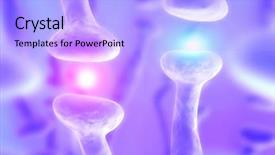
Slides having active receptor
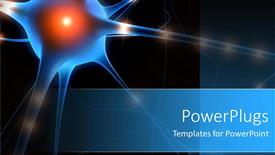
A nerve cell with blackish background and place for text

PPT layouts with nerve cell
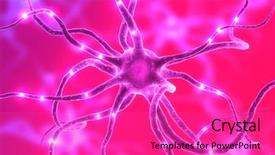
PPT theme with active neurone
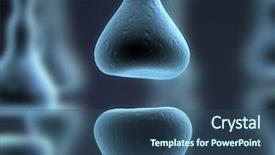
PPT theme with receptor
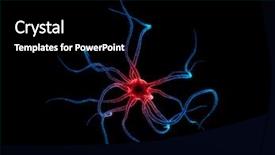
PPT theme having neurone
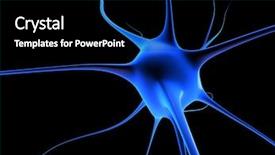
Presentation theme consisting of neurone cell backdrop

PPT theme enhanced with neurone background
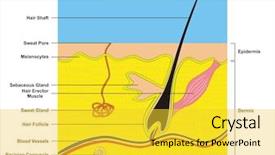
Slide deck consisting of human skin cross-section
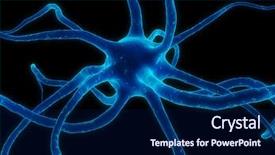
Presentation having neurone

Slide set enhanced with electronic photograph of a section of brain tissue with nerve cells neurons
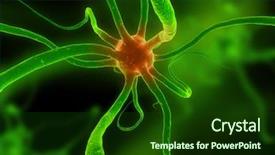
Slides featuring axon
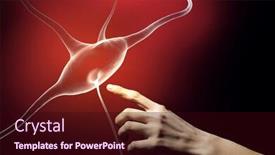
PPT theme consisting of close up of man hand touching nerve symbol
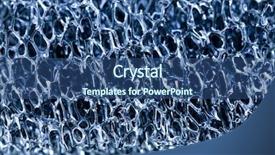
Presentation theme with extreme close-up shot of plastic sponge
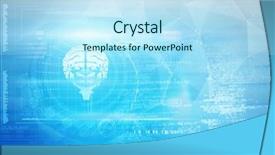
PPT layouts with dna helix and brain interface against composite image of abstract backgrounds
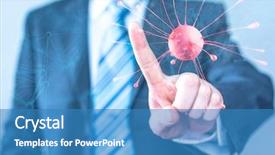
PPT layouts enhanced with businessman touching nerve cell on virtual screen
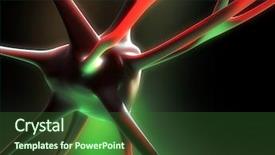
Presentation theme with nerve cell
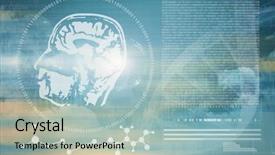
Slide set consisting of digitally image of dna helix and brain interface against clouds and binary coded computer screen
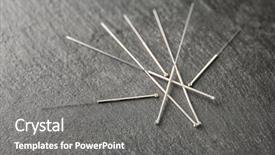
Slide set having needles for acupuncture on dark textured background background
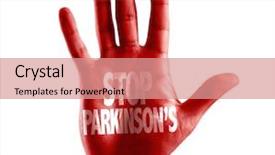
PPT theme enhanced with stop parkinson's written on hand isolated on white background backdrop
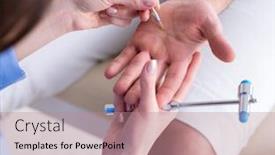
PPT layouts with doctor checking nerve reflexes with hammer backdrop
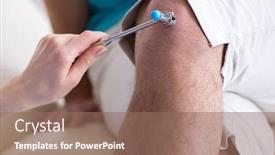
Slide deck with doctor checking nerve reflexes with hammer
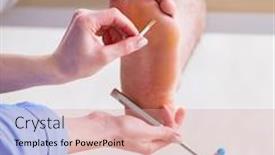
Slides having doctor checking nerve reflexes with hammer
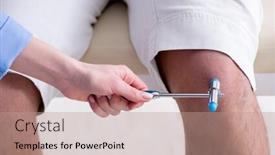
Presentation featuring doctor checking nerve reflexes with hammer background
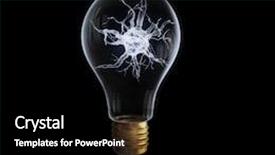
PPT layouts having idea concept with nerve inside of light bulb on black background

PPT theme featuring preparation of nervine food ingredients with herbs spices nerve tonic ingredients to stimulate nervous system and restore balance healthy natural health care on white background

Slide set enhanced with nervine plant based healing food medicine with herb spice collection nerve tonic foods to revitalise the nervous system natural adaptogen alternative health care with hemp notebook
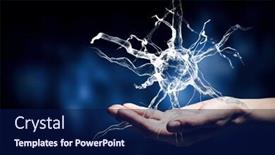
Slide set with close up of man hand touching nerve symbol
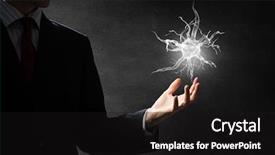
PPT theme with close up of man hand holding nerve symbol in palms
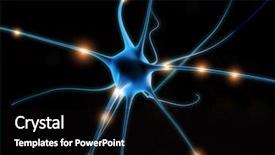

Slide deck having nerve cell backdrop
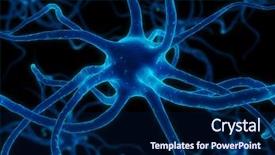
Presentation theme featuring neurone background
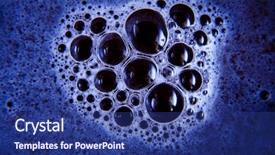
Slide deck enhanced with abstract bubbles

Presentation theme consisting of dna helix and brain interface against boy looking at laptop

PPT theme featuring concept conceptual childhood autism syndrome symtoms or disorder abstract word cloud held in hands isolated on background metaphor to communication social behavior care autistic speech difference
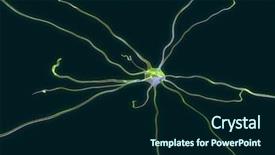
Presentation design enhanced with nerve cell

PPT theme enhanced with doctor checking nerve reflexes with hammer background

PPT layouts featuring doctor checking nerve reflexes with hammer

Presentation design with doctor checking nerve reflexes with hammer background
More nerve templates for powerpoint and google slides:.
Company Info
Nervous System Presentation Template
Download this template as well as our other 21,747 templates for only $99.

Slide: 1 / 20
Nervous System Presentation Template Special Features
Make your next PowerPoint, Google Slides, or Keynote presentation more effective with our professionally designed Nervous System template. Improve the way you present seminars, webinars and lectures. Make more exciting sales presentations, trade show displays and product promotions, or use them in any educational setting for more impact and greater retention.
Nervous System presentation template includes built-in layouts and stunning backgrounds to make your presentation a winner. The attention we pay to the finest detail make this presentation template truly world-class.
We take pride in employing features most companies skip because it's "too much work." This Nervous System presentation theme is carefully considered and implemented to maximize the beauty, consistency, clarity and -- most importantly -- audience impact of your presentation.
Intuitive and Easy To Use
Enhanced colors, stunning imagery, professional typography, make life easy, 17 professional pre-made slides, make life even easier.
All our presentation templates are saved in POT, PPT, and PPTX formats to make them compatible with your presentation software like Office for Mac, Keynote, Google Docs, OpenOffice, and others. Some MS PowerPoint features may not be supported by your presentation software. Please read more about Microsoft PowerPoint compatibility in your software documentation.
- All Themes (16676)
- Abstract/Textures (2449)
- Agriculture (338)
- America (206)
- Animals and Pets (344)
- Animated (32)
- Art & Entertainment (802)
- Business (1951)
- Business Concepts (3754)
- Careers/Industry (2977)
- Cars and Transportation (482)
- Computers (284)
- Construction (976)
- Consulting (2852)
- Education & Training (2803)
- Financial/Accounting (903)
- Flags/International (297)
- Food & Beverage (754)
- General (12382)
- Global (704)
- Health and Recreation (306)
- Holiday/Special Occasion (1167)
- Legal (219)
- Medical (1236)
- Military (137)
- Nature & Environment (1665)
- People (1868)
- Politics and Government (234)
- Real Estate (283)
- Religious/Spiritual (480)
- Sports (732)
- Technology and Science (2159)
- Telecommunication (497)
- Utilities/Industrial (407)
With the all-inclusive price of $99 you are only paying $.01 per template!
Join our 81,532 happy customers and get complete access to our 21,747 templates, 100% satisfaction guaranteed or your money back.
sign up today

Powerpoint Templates
Icon Bundle
Kpi Dashboard
Professional
Business Plans
Swot Analysis
Gantt Chart
Business Proposal
Marketing Plan
Project Management
Business Case
Business Model
Cyber Security
Business PPT
Digital Marketing
Digital Transformation
Human Resources
Product Management
Artificial Intelligence
Company Profile
Acknowledgement PPT
PPT Presentation
Reports Brochures
One Page Pitch
Interview PPT
All Categories

0514 neuron nervous system medical images for powerpoint
Enthuse the folks with our 0514 Neuron Nervous System Medical Images For PowerPoint. The gang will begin to get a move on.

- Add a user to your subscription for free
You must be logged in to download this presentation.
Do you want to remove this product from your favourites?
PowerPoint presentation slides
We are proud to present our 0514 neuron nervous system medical images for powerpoint. Neurons, also known as nerve cells, communicate within the body by transmitting electrochemical signals. Neurons look quite different from other cells in the body due to the many long cellular processes that extend from their central cell body. This Neuron Nervous System Medical Images for PowerPoint will facilitate the speakers by making presentations more specific.

People who downloaded this PowerPoint presentation also viewed the following :
- Anatomy , Nervous System
- Cell body ,
- Axon terminal ,
- Schwann cell ,
0514 neuron nervous system medical images for powerpoint with all 10 slides:
Our 0514 Neuron Nervous System Medical Images For PowerPoint help establish benchmarks. Create great examples for all to follow.
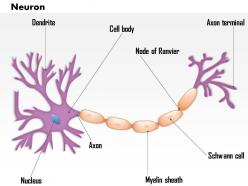
Ratings and Reviews
by Derick Meyer
March 13, 2021
by Davies Rivera


Introducing Copilot+ PCs
May 20, 2024 | Yusuf Mehdi - Executive Vice President, Consumer Chief Marketing Officer
- Share on Facebook (opens new window)
- Share on Twitter (opens new window)
- Share on LinkedIn (opens new window)

An on-demand recording of our May 20 event is available .
Today, at a special event on our new Microsoft campus, we introduced the world to a new category of Windows PCs designed for AI, Copilot+ PCs.
Copilot+ PCs are the fastest, most intelligent Windows PCs ever built. With powerful new silicon capable of an incredible 40+ TOPS (trillion operations per second), all – day battery life and access to the most advanced AI models, Copilot+ PCs will enable you to do things you can’t on any other PC. Easily find and remember what you have seen in your PC with Recall, generate and refine AI images in near real-time directly on the device using Cocreator, and bridge language barriers with Live Captions, translating audio from 40+ languages into English .
These experiences come to life on a set of thin, light and beautiful devices from Microsoft Surface and our OEM partners Acer, ASUS, Dell, HP, Lenovo and Samsung, with pre-orders beginning today and availability starting on June 18. Starting at $999, Copilot+ PCs offer incredible value.
This first wave of Copilot+ PCs is just the beginning. Over the past year, we have seen an incredible pace of innovation of AI in the cloud with Copilot allowing us to do things that we never dreamed possible. Now, we begin a new chapter with AI innovation on the device. We have completely reimagined the entirety of the PC – from silicon to the operating system, the application layer to the cloud – with AI at the center, marking the most significant change to the Windows platform in decades.
YouTube Video
The fastest, most secure Windows PCs ever built
We introduced an all-new system architecture to bring the power of the CPU, GPU, and now a new high performance Neural Processing Unit (NPU) together. Connected to and enhanced by the large language models (LLMs) running in our Azure Cloud in concert with small language models (SLMs), Copilot+ PCs can now achieve a level of performance never seen before. They are up to 20x more powerful [1] and up to 100x as efficient [2] for running AI workloads and deliver industry-leading AI acceleration. They outperform Apple’s MacBook Air 15” by up to 58% in sustained multithreaded performance [3] , all while delivering all-day battery life. With incredible efficiency, Copilot+ PCs can deliver up to 22 hours of local video playback or 15 hours of web browsing on a single charge. [4] That is up to 20% more battery in local video playback than the MacBook Air 15”. [5]
Windows now has the best implementation of apps on the fastest chip, starting with Qualcomm. We now offer more native Arm64 experiences than ever before, including our fastest implementation of Microsoft 365 apps like Teams, PowerPoint, Outlook, Word, Excel, OneDrive and OneNote. Chrome, Spotify, Zoom, WhatsApp, Adobe Photoshop, Adobe Lightroom, Blender, Affinity Suite, DaVinci Resolve and many more now run natively on Arm to give you great performance with additional apps, like Slack, releasing later this year. In fact, 87% of the total app minutes people spend in apps today have native Arm versions. [6] With a powerful new emulator, Prism, your apps run great, whether native or emulated.
Every Copilot+ PC comes secured out of the box. The Microsoft Pluton Security processor will be enabled by default on all Copilot+ PCs and we have introduced a number of new features, updates and defaults to Windows 11 that make it easy for users to stay secure. And, we’ve built in personalized privacy controls to help you protect what’s important to you. You can read more about how we are making Windows more secure here .
Entirely new, powerful AI experiences
Copilot+ PCs leverage powerful processors and multiple state-of-the-art AI models, including several of Microsoft’s world-class SLMs, to unlock a new set of experiences you can run locally, directly on the device. This removes previous limitations on things like latency, cost and even privacy to help you be more productive, creative and communicate more effectively.
Recall instantly
We set out to solve one of the most frustrating problems we encounter daily – finding something we know we have seen before on our PC. Today, we must remember what file folder it was stored in, what website it was on, or scroll through hundreds of emails trying to find it.
Now with Recall, you can access virtually what you have seen or done on your PC in a way that feels like having photographic memory. Copilot+ PCs organize information like we do – based on relationships and associations unique to each of our individual experiences. This helps you remember things you may have forgotten so you can find what you’re looking for quickly and intuitively by simply using the cues you remember. [7]
You can scroll across time to find the content you need in your timeline across any application, website, document, or more. Interact intuitively using snapshots with screenray to help you take the next step using suggested actions based on object recognition. And get back to where you were, whether to a specific email in Outlook or the right chat in Teams.
Recall leverages your personal semantic index, built and stored entirely on your device. Your snapshots are yours; they stay locally on your PC. You can delete individual snapshots, adjust and delete ranges of time in Settings, or pause at any point right from the icon in the System Tray on your Taskbar. You can also filter apps and websites from ever being saved. You are always in control with privacy you can trust.
Cocreate with AI-powered image creation and editing, built into Windows
Since the launch of Image Creator, almost 10 billion images have been generated, helping more people bring their ideas to life easily by using natural language to describe what they want to create. Yet, today’s cloud offerings may limit the number of images you can create, keep you waiting while the artwork processes or even present privacy concerns. By using the Neural Processing Units (NPUs) and powerful local small language models, we are bringing innovative new experiences to your favorite creative applications like Paint and Photos.
Combine your ink strokes with text prompts to generate new images in nearly real time with Cocreator. As you iterate, so does the artwork, helping you more easily refine, edit and evolve your ideas. Powerful diffusion-based algorithms optimize for the highest quality output over minimum steps to make it feel like you are creating alongside AI. Use the creativity slider to choose from a range of artwork from more literal to more expressive. Once you select your artwork, you can continue iterating on top of it, helping you express your ideas, regardless of your creative skills.
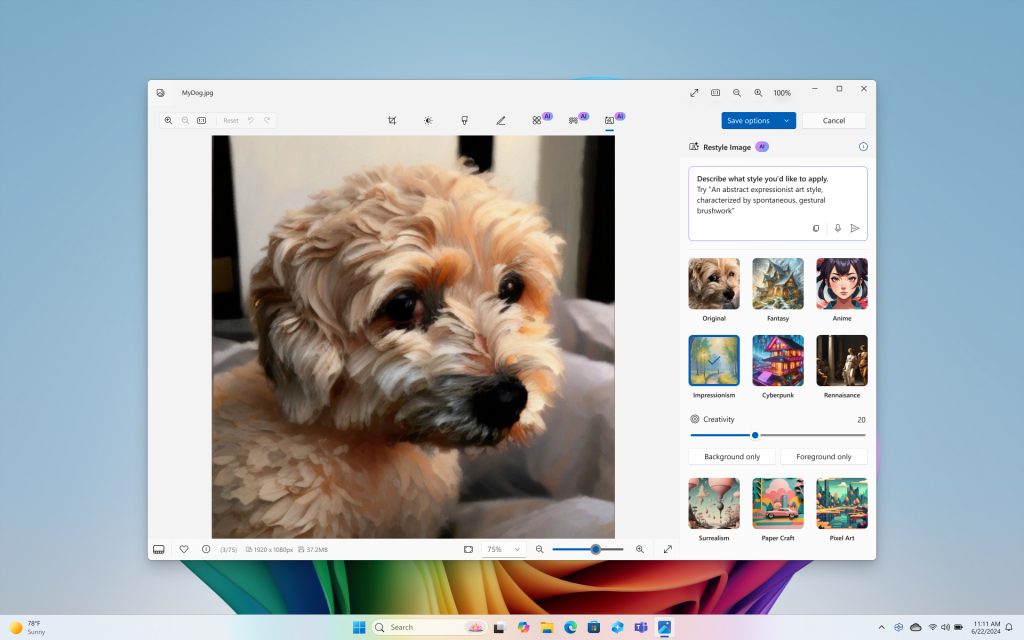
Take photo editing and image creation to the next level. With Restyle Image, you can reimagine your personal photos with a new style combining image generation and photo editing in Photos. Use a pre-set style like Cyberpunk or Claymation to change the background, foreground or full picture to create an entirely new image. Or jumpstart your next creative project and get visual inspiration with Image Creator in Photos. On Copilot+ PCs you can generate endless images for free, fast, with the ability to fine tune images to your liking and to save your favorites to collections.
Innovative AI experiences from the creative apps you love
We are also partnering with some of the biggest and most-loved applications on the planet to leverage the power of the NPU to deliver new innovative AI experiences.
Together with Adobe, we are thrilled to announce Adobe’s flagship apps are coming to Copilot+ PCs, including Photoshop, Lightroom and Express – available today. Illustrator, Premiere Pro and more are coming this summer. And we’re continuing to partner to optimize AI in these apps for the NPU. For Adobe Creative Cloud customers, they will benefit from the full performance advantages of Copilot+ PCs to express their creativity faster than ever before.
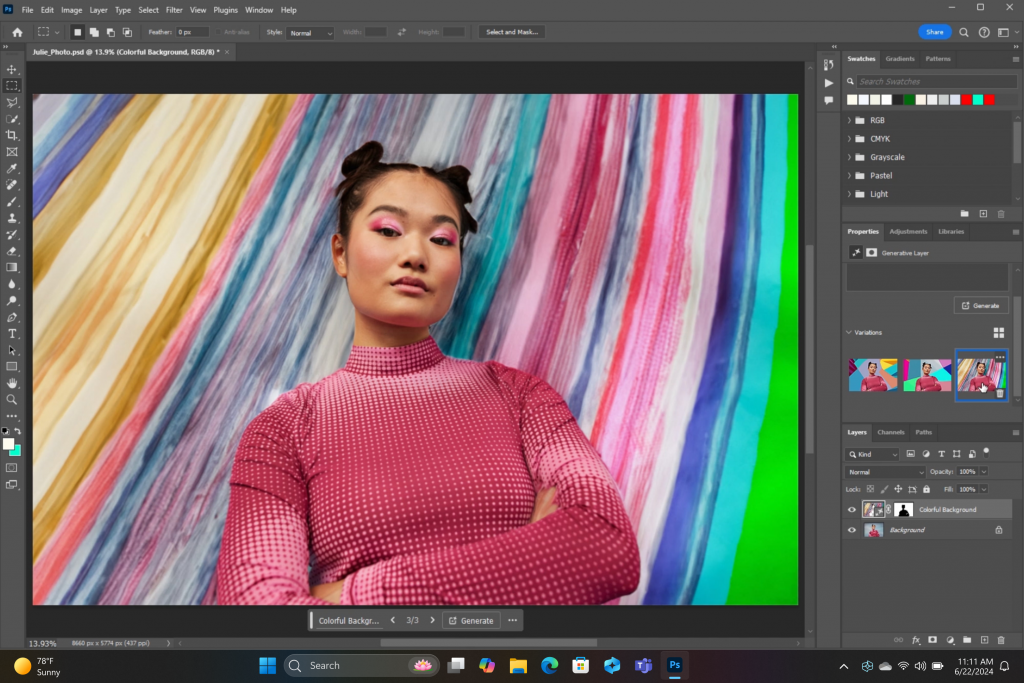
DaVinci Resolve Studio
Effortlessly apply visual effects to objects and people using NPU-accelerated Magic Mask in DaVinci Resolve Studio.
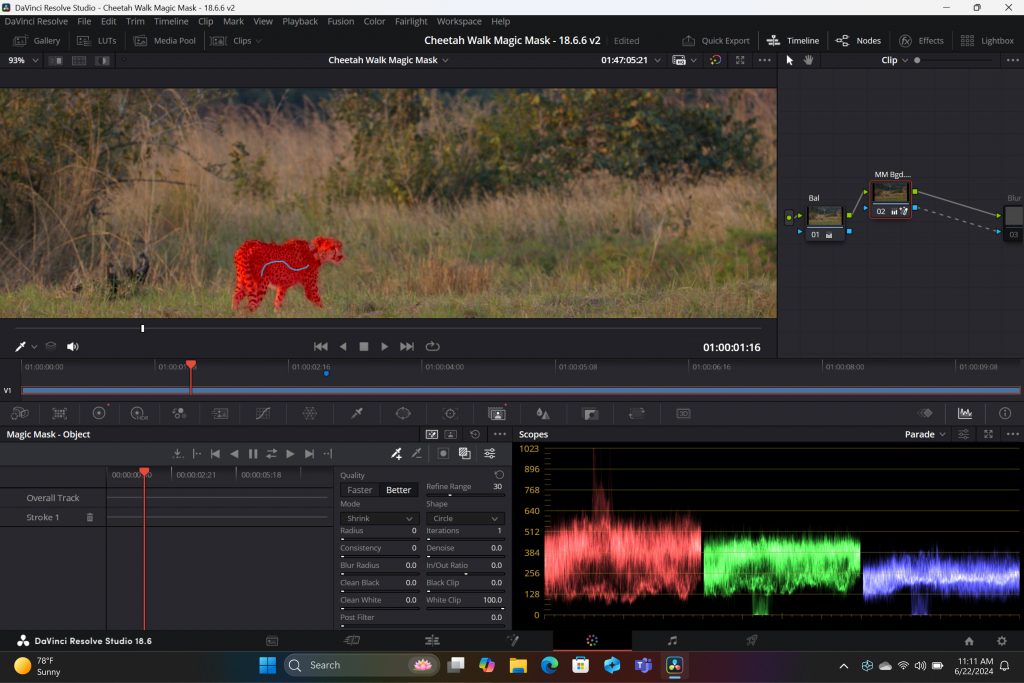
Remove the background from any video clip in a snap using Auto Cutout running on the NPU in CapCut.

Stay in your flow with faster, more responsive adaptive input controls, like head movement or facial expressions via the new NPU-powered camera pipeline in Cephable.
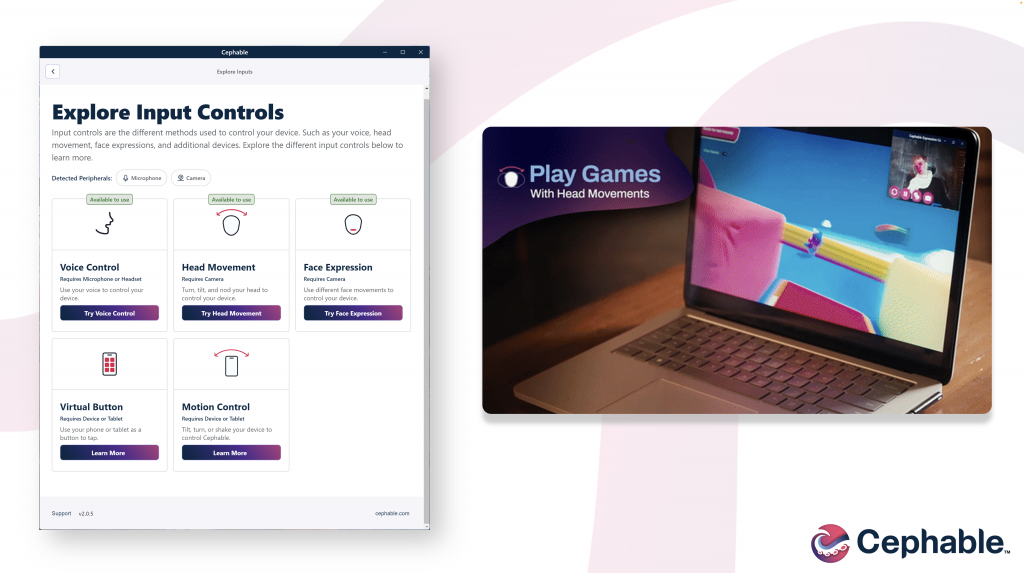
LiquidText
Make quicker and smarter annotations to documents, using AI features that run entirely on-device via NPU, so data stays private in LiquidText.
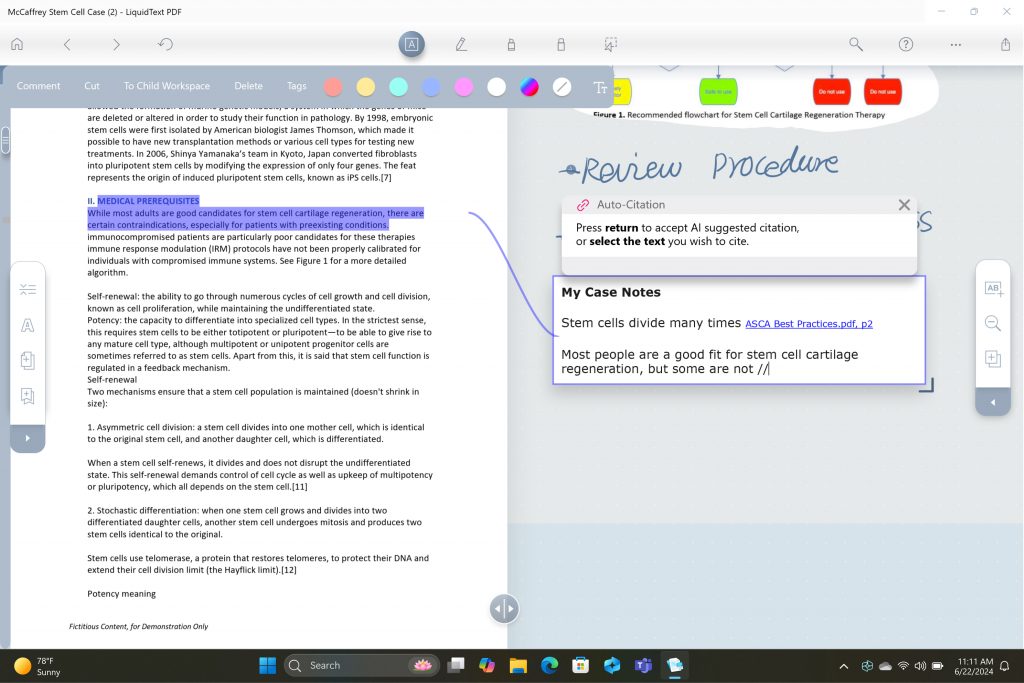
Have fun breaking down and remixing any music track, with a new, higher-quality version of NeuralMix™ that’s exclusive to NPU in Algoriddim’s djay Pro.
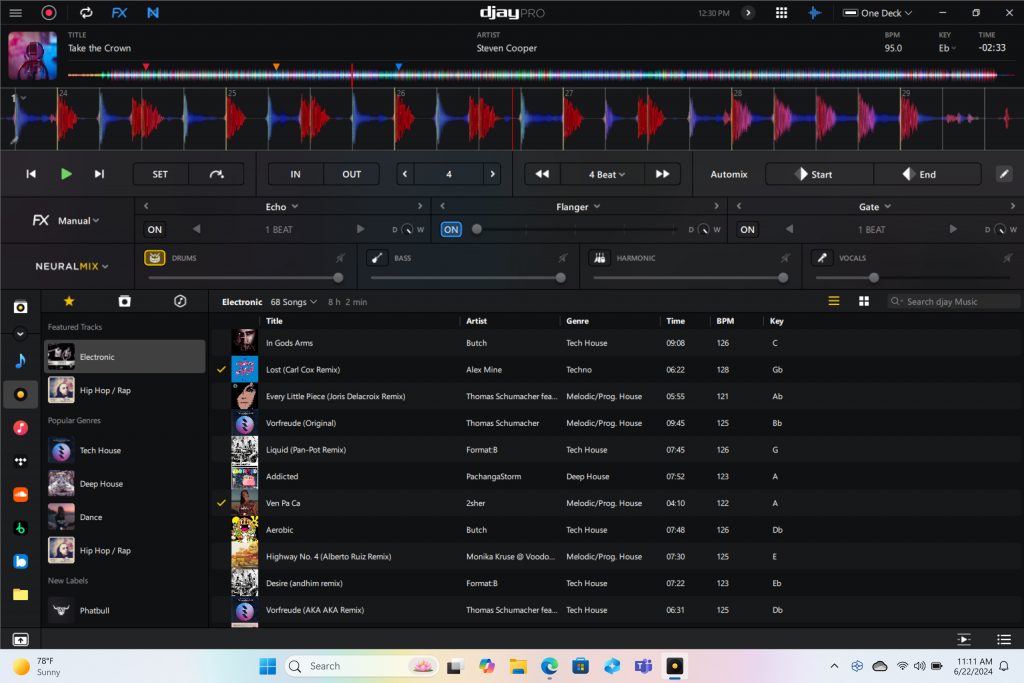
Connect and communicate effortlessly with live captions
In an increasingly connected and global world, Windows wants to bring people closer together. Whether catching up on your favorite podcast from a different country, or watching your favorite international sports team, or even collaborating with friends and colleagues across the world, we want to make more content accessible to more people.
Live Captions now has live translations and will turn any audio that passes through your PC into a single, English-language caption experience, in real time on your screen across all your apps consistently. You can translate any live or pre-recorded audio in any app or video platform from over 40 languages into English subtitles instantly, automatically and even while you’re offline. Powered by the NPU and available across all Copilot+ PCs, now you can have confidence your words are understood as intended.
New and enhanced Windows Studio Effects
Look and sound your best automatically with easily accessible controls at your fingertips in Quick Settings. Portrait light automatically adjusts the image to improve your perceived illumination in a dark environment or brighten the foreground pixels when in a low-light environment. Three new creative filters (illustrated, animated or watercolor) add an artistic flare. Eye contact teleprompter helps you maintain eye contact while reading your screen. New improvements to voice focus and portrait blur help ensure you’re always in focus.
Copilot, your everyday AI companion

Every Copilot+ PC comes with your personal powerful AI agent that is just a single tap away on keyboards with the new Copilot key. [8] Copilot will now have the full application experience customers have been asking for in a streamlined, simple yet powerful and personal design. Copilot puts the most advanced AI models at your fingertips. In the coming weeks, get access to the latest models including GPT-4o from our partners at OpenAI, so you can have voice conversations that feel more natural.
Advancing AI responsibly
At Microsoft, we have a company-wide commitment to develop ethical, safe and secure AI. Our responsible AI principles guided the development of these new experiences, and all AI features are aligned with our standards. Learn more here .
New Copilot+ PCs from Microsoft Surface and our partners
We have worked with each of the top OEMs — Acer, ASUS, Dell, HP, Lenovo, Samsung — and of course Surface, to bring exciting new Copilot+ PCs that will begin to launch on June 18. Starting at $999, these devices are up to $200 less than similar spec’d devices [9] .
Surface plays a key role in the Windows ecosystem, as we design software and hardware together to deliver innovative designs and meaningful experiences to our customers and fans. We are introducing the first-ever Copilot+ PCs from Surface: The all-new Surface Pro and Surface Laptop.
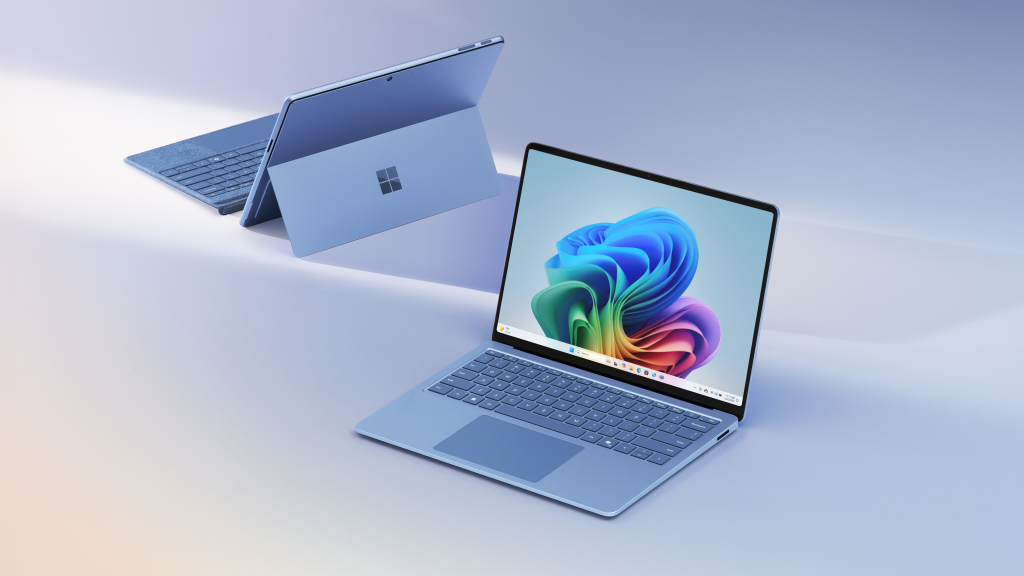
The new Surface Laptop is a powerhouse in an updated, modern laptop design with razor-thin bezels, a brilliant touchscreen display, AI-enhanced camera, premium audio, and now with a haptic touchpad.
Choose between a 13.8” and 15” display and four stunning colors. Enjoy up to 22 hours of local video playback on Surface Laptop 15” or up to 20 hours on Surface Laptop13.8” on top of incredible performance and all-new AI experiences.
The new Surface Pro is the most flexible 2-in-1 laptop, now reimagined with more speed and battery life to power all-new AI experiences. It introduces a new, optional OLED with HDR display, and ultrawide field of view camera perfect for Windows Studio Effects. The new Surface Pro Flex Keyboard is the first 2-in-1 keyboard designed to be used both attached or detached. It delivers enhanced stability, with Surface Slim Pen storage and charging integrated seamlessly, as well as a quiet, haptic touchpad. Learn more here.
New Copilot+ PCs from the biggest brands available starting June 18:
- Acer : Acer’s Swift 14 AI 2.5K touchscreen enables you to draw and edit your vision with greater accuracy and with color-accurate imagery. Launch and discover AI-enhanced features, like Acer PurifiedVoice 2.0 and Purified View, with a touch of the dedicated AcerSense button.
- ASUS : The ASUS Vivobook S 15 is a powerful device that brings AI experiences to life with its Snapdragon X Elite Platform and built-in Qualcomm® AI. It boasts 40+ NPU TOPS, a dual-fan cooling system, and up to 1 TB of storage. Next-gen AI enhancements include Windows Studio effects v2 and ASUS AiSense camera, with presence-detection capabilities for Adaptive Dimming and Lock. Built for portability, it has an ultra-slim and light all-metal design, a high-capacity battery, and premium styling with a single-zone RGB backlit keyboard.
- Dell : Dell is launching five new Copilot+ PCs, including the XPS 13, Inspiron 14 Plus, Inspiron 14, Latitude 7455, and Latitude 5455, offering a range of consumer and commercial options that deliver groundbreaking battery life and unique AI experiences. The XPS 13 is powered by Snapdragon X Elite processors and features a premium, futuristic design, while the Latitude 7455 boasts a stunning QHD+ display and quad speakers with AI noise reduction. The Inspiron14 and Inspiron 14 Plus feature a Snapdragon X Plus 1and are crafted with lightweight, low carbon aluminum and are energy efficient with EPEAT Gold rating.
- HP : HP’s OmniBook X AI PC and HP EliteBook Ultra G1q AI PC with Snapdragon X Elite are slim and sleek designs, delivering advanced performance and mobility for a more personalized computing experience. Features include long-lasting battery life and AI-powered productivity tools, such as real-time transcription and meeting summaries. A 5MP camera with automatic framing and eye focus is supported by Poly Studio’s crystal-clear audio for enhanced virtual interactions.
- Lenovo : Lenovo is launching two AI PCs: one built for consumers, Yoga Slim 7x, and one for commercial, ThinkPad T14s Gen 6. The Yoga Slim 7x brings efficiency for creatives, featuring a 14.5” touchscreen with 3K Dolby Vision and optimized power for 3D rendering and video editing. The T14s Gen 6 brings enterprise-level experiences and AI performance to your work tasks, with features including a webcam privacy shutter, Wi-Fi 7 connectivity and up to 64GB RAM.
- Samsung : Samsung’s new Galaxy Book4 Edge is ultra-thin and light, with a 3K resolution 2x AMOLED display and Wi-Fi 7 connectivity. It has a long-lasting battery that provides up to 22 hours of video playback, making it perfect for work or entertainment on the go.
Learn more about new Copilot+ PCs and pre-order today at Microsoft.com and from major PC manufacturers, as well as other leading global retailers.
Start testing for commercial deployment today
Copilot+ PCs offer businesses the most performant Windows 11 devices with unique AI capabilities to unlock productivity, improve collaboration and drive efficiency. As a Windows PC, businesses can deploy and manage a Copilot+ PC with the same tools and processes used today including IT controls for new features and AppAssure support. We recommend IT admins begin testing and readying for deployment to start empowering your workforce with access to powerful AI features on these high-performance devices. You can read more about our commercial experiences here .

AI innovation across the Windows ecosystem
Like we’ve always done with Windows, we have built a platform for our ecosystem partners to build on.
The first Copilot+ PCs will launch with both the Snapdragon® X Elite and Snapdragon® X Plus processors and feature leading performance per watt thanks to the custom Qualcomm Oryon™ CPU, which delivers unrivaled performance and battery efficiency. Snapdragon X Series delivers 45 NPU TOPS all-in-one system on a chip (SoC). The premium integrated Qualcomm® Adreno ™ GPU delivers stunning graphics for immersive entertainment. We look forward to expanding through deep partnerships with Intel and AMD, starting with Lunar Lake and Strix Point. We will bring new Copilot+ PC experiences at a later date. In the future we expect to see devices with this silicon paired with powerful graphics cards like NVIDIA GeForce RTX and AMD Radeon™, bringing Copilot+ PC experiences to reach even broader audiences like advanced gamers and creators.
We are at an inflection point where the PC will accelerate AI innovation. We believe the richest AI experiences will only be possible when the cloud and device work together in concert. Together with our partners, we’re setting the frame for the next decade of Windows innovation.
[1] Based on snapshot of aggregated, non-gaming app usage data as of April 2024 for iGPU-based laptops and 2-in-1 devices running Windows 10 and Windows 11 in US, UK, CA, FR, AU, DE, JP.
[2] Tested April 2024 using Phi SLM workload running 512-token prompt processing in a loop with default settings comparing pre-release Copilot+ PC builds with Snapdragon Elite X 12 Core and Snapdragon X Plus 10 core configurations (QNN build) to Windows 11 PC with NVIDIA 4080 GPU configuration (CUDA build).
[3] Tested May 2024 using Cinebench 2024 Multi-Core benchmark comparing Copilot+ PCs with Snapdragon X Elite 12 core and Snapdragon X Plus 10 core configurations to MacBook Air 15” with M3 8 core CPU / 10 Core GPU configuration. Performance will vary significantly between device configuration and usage.
[4] *Battery life varies significantly by device and with settings, usage and other factors. See aka.ms/cpclaims*
[5] *Battery life varies significantly based on device configuration, usage, network and feature configuration, signal strength, settings and other factors. Testing conducted May 2024 using the prelease Windows ADK full screen local video playback assessment under standard testing conditions, with the device connected to Wi-Fi and screen brightness set to 150 nits, comparing Copilot+ PCs with Snapdragon X Elite 12 core and Snapdragon X Plus 10 core configurations running Windows Version 26097.5003 (24H2) to MacBook Air 15” M3 8-Core CPU/ 10 Core GPU running macOS 14.4 with similar device configurations and testing scenario.
[6] Based on snapshot of aggregated, non-gaming app usage data as of April 2024 for iGPU-based laptops and 2-in-1 devices running Windows 10 and Windows 11 in US, UK, CA, FR, AU, DE, JP.
[7] Recall is optimized for select languages (English, Chinese (simplified), French, German, Japanese, and Spanish.) Content-based and storage limitations apply. Learn more here .
[8] Copilot key functionality may vary. See aka.ms/keysupport
[9] Based on MSRPs; actual savings may vary
Tags: AI , Copilot+ PC
- Check us out on RSS
Got any suggestions?
We want to hear from you! Send us a message and help improve Slidesgo
Top searches
Trending searches

memorial day
12 templates

ai technology
174 templates

150 templates

18 templates

15 templates

computer network
71 templates
Biology Subject for Elementary: Nervous System
It seems that you like this template, biology subject for elementary: nervous system presentation, free google slides theme, powerpoint template, and canva presentation template.
By reading these words, you’re making neuronal connections in your brain. Our nervous system is in constant functionality, it just doesn’t stop! And it’s one of medicine’s greatest areas yet to be completely comprehended. The nervous system is very complex and essential for our bodies, so it can be hard to explain to elementary students. But it doesn’t have to be! Try out presenting it with this template! It looks like a notebook with plenty of funny illustrations of skulls, brains, neurons, etc. Teach them step by step every part of this intricate system. A biology subject lesson has never been so fun to learn!
Features of this template
- 100% editable and easy to modify
- 35 different slides to impress your audience
- Contains easy-to-edit graphics such as graphs, maps, tables, timelines and mockups
- Includes 500+ icons and Flaticon’s extension for customizing your slides
- Designed to be used in Google Slides, Canva, and Microsoft PowerPoint
- 16:9 widescreen format suitable for all types of screens
- Includes information about fonts, colors, and credits of the resources used
How can I use the template?
Am I free to use the templates?
How to attribute?
Attribution required If you are a free user, you must attribute Slidesgo by keeping the slide where the credits appear. How to attribute?
Related posts on our blog.

How to Add, Duplicate, Move, Delete or Hide Slides in Google Slides

How to Change Layouts in PowerPoint

How to Change the Slide Size in Google Slides
Related presentations.
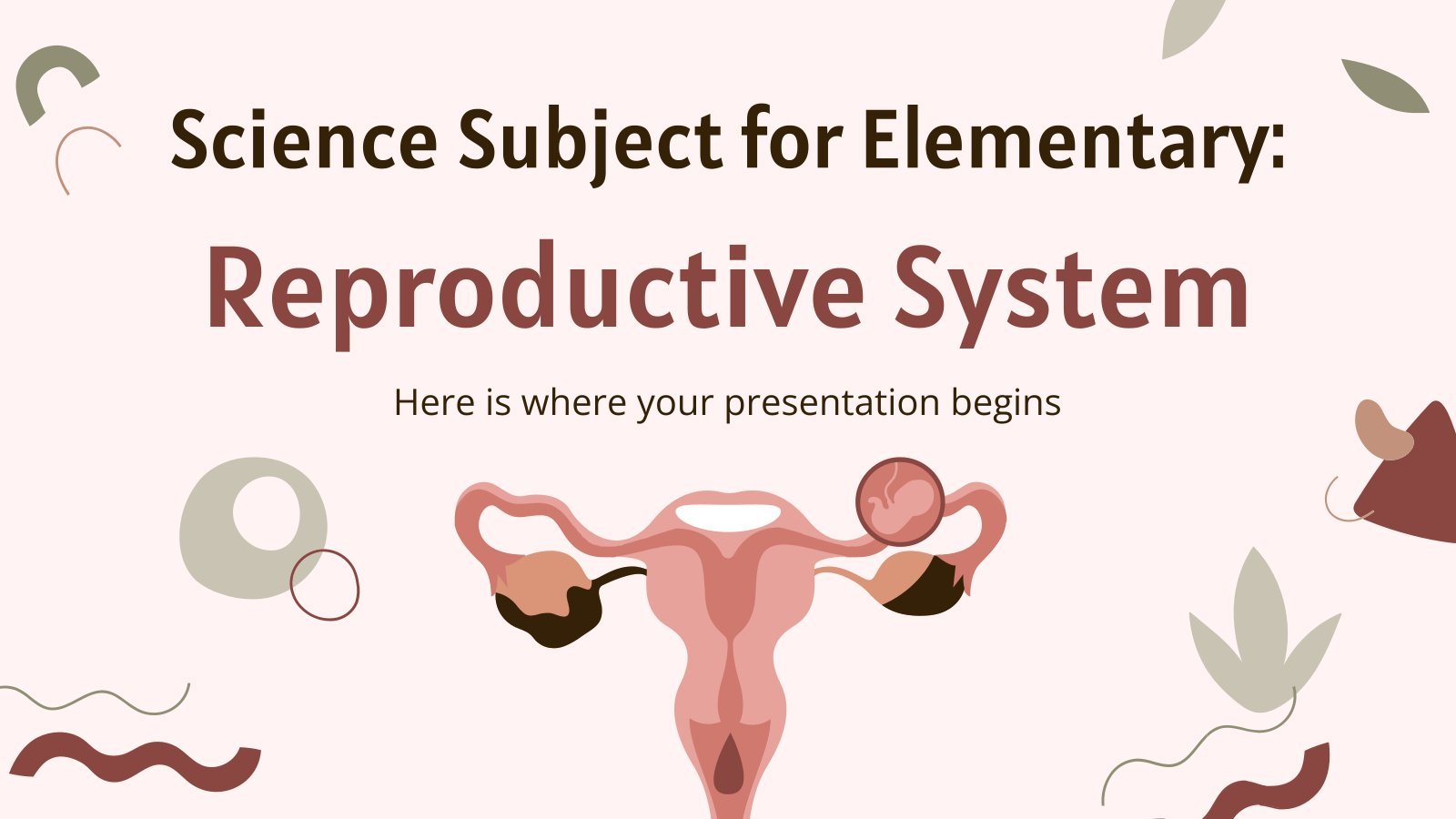
Premium template
Unlock this template and gain unlimited access

Register for free and start editing online

IMAGES
VIDEO
COMMENTS
Free Nervous System Slide Templates for an Engaging Slideshow. Make your presentations on the nervous system engaging and informative with a nervous system PowerPoint template. Whether you're a biology teacher, medical student, or neuroscience researcher, these templates will help you convey complex information with clarity and visual appeal.
Download the Nervous System Infections Breakthrough presentation for PowerPoint or Google Slides.Treating diseases involves a lot of prior research and clinical trials. But whenever there's a new discovery, a revolutionary finding that opens the door to new treatments, vaccines or ways to prevent illnesses, it's great news.
Free Google Slides theme, PowerPoint template, and Canva presentation template. Discover the fascinating world of the nervous system with this creative template. With calming colors and engaging visuals, you'll be able to explore the different components of the nervous system in a fun and informative way. Plus, you'll get an in-depth look at ...
The Neuron PowerPoint templates for professional presentations are animated diagrams explaining nerve cells' functions and components. The Brain, Neurons, and Nervous System PowerPoint Template include customizable illustrations with descriptions. Users can also change the professional PowerPoint background color or the nervous system ...
The professional presentation PowerPoint templates of neurons are animated diagrams to explain the functions and components of nerve cells. The nervous system is the most important biological system in the human body to transmit sensory information. The nervous system has two parts: the central nervous system and the peripheral nervous system.
Cerebrum (cerebral hemispheres) Paired, superior parts of the brain. Includes more than half of the brain mass; obscures most of the brain stem. The surface is made of ridges (gyri = "twisters") and grooves (sulci = "furrows") Fissures (deep grooves) divide the cerebrum into lobes. Occipital lobe. Temporal lobe.
Below you'll see thumbnail sized previews of the title slides of a few of our 52 best nervous system templates for PowerPoint and Google Slides. The text you'll see in in those slides is just example text. The nervous system-related image or video you'll see in the background of each title slide is designed to help you set the stage for ...
Template 17: The Neuron: Signals that Matter. The neuron is a specialized cell of the nervous system that is responsible for transmitting signals throughout the body. Use this PPT set to label and explain the structure of the cell and how it functions. Download it now. Download this template.
Slide 1 of 11. 0514 synapse nervous system medical images for powerpoint. Slide 1 of 12. 0514 brain inferior view medical images for powerpoint. Slide 1 of 9. 0514 human central nervous system medical images for powerpoint. Slide 1 of 8. 0514 anatomy of brain superior view medical images for powerpoint. Slide 1 of 9.
Free Nervous System Template for PowerPoint and Google Slides. Main features. 34 slides 100% editable. 16:9 widescreen format suitable for all screens. High quality royalty-free images. Included resources: charts, graphs, timelines and diagrams. More than 100 icons customizable in color and size. Main font: Arial.
Brain Presentation templates. The brain is the chief organ of the nervous system. Thanks to it, we can perform all our daily actions, from the simplest ones like eating or talking, to the most fun ones, like discovering these Google Slides and PowerPoint templates about the brain itself. Filters.
CrystalGraphics creates templates designed to make even average presentations look incredible. Below you'll see thumbnail sized previews of the title slides of a few of our 32 best nervous system brain templates for PowerPoint and Google Slides. ... The nervous system brain-related image or video you'll see in the background of each title ...
Download Free and Premium Science Nervous System PowerPoint Templates. Choose and download Science Nervous System PowerPoint templates, and Science Nervous System PowerPoint Backgrounds in just a few minutes.And with amazing ease of use, you can transform your "sleep-inducing" PowerPoint presentation into an aggressive, energetic, jaw-dropping presentation in nearly no time at all.
The PowerPoint template contains a detailed drawing of the nervous system, shown in three of the four slides. The first of these slides highlights the drawing in orange. This slide features the parasympathetic nerves that are related to rest and digestion. Minimalist vector icons can be found on both sides of the diagram.
Below you'll see thumbnail sized previews of the title slides of a few of our 70 best nerve templates for PowerPoint and Google Slides. The text you'll see in in those slides is just example text. The nerve-related image or video you'll see in the background of each title slide is designed to help you set the stage for your nerve-related ...
Nervous System. 1. System Nervous T- 1-855-694-8886 Email- [email protected] By iTutor.com. 2. The Nervous System The nervous system is very important in helping to maintain the homeostasis (balance) of the human body. A series of sensory receptors work with the nervous system to provide information about changes in both the internal and external ...
Free Google Slides theme and PowerPoint template. Download the "Neuroanatomy: Central Nervous System" presentation for PowerPoint or Google Slides. Healthcare goes beyond curing patients and combating illnesses. Raising awareness about diseases, informing people about prevention methods, discussing some good practices, or even talking about a ...
Improve the way you present seminars, webinars and lectures. Make more exciting sales presentations, trade show displays and product promotions, or use them in any educational setting for more impact and greater retention. Nervous System presentation template includes built-in layouts and stunning backgrounds to make your presentation a winner.
The Nervous System PowerPoint Template is a presentation template that can be used for presentations on neuroscience and human anatomy. It provides engaging ...
Features of these PowerPoint presentation slides: We are proud to present our 0514 neuron nervous system medical images for powerpoint. Neurons, also known as nerve cells, communicate within the body by transmitting electrochemical signals.
Free Google Slides theme, PowerPoint template, and Canva presentation template. Presenting breakthroughs in the nervous system just got cooler! With this amazing presentation template, you can showcase your research with a vintage vibe. Its design style is all sepia, even the illustrations, so it evokes the feeling of finding an old doctor's ...
Marketing Plan Calendar & Weather Background Research Pitch Deck Infographics Social Media Planner Notebook A4 Portfolio Lesson School ... PowerPoint template, and Canva presentation template ... We've risen to the challenge and this is the result: A set of infographics about the nervous system that covers everything from representations of ...
Take photo editing and image creation to the next level. With Restyle Image, you can reimagine your personal photos with a new style combining image generation and photo editing in Photos. Use a pre-set style like Cyberpunk or Claymation to change the background, foreground or full picture to create an entirely new image.
Marketing Plan Calendar & Weather Background Research Pitch Deck Infographics Social Media Planner Notebook A4 Portfolio Lesson School Meeting Newsletter Thesis Defense Project Proposal Editable templates ... Nervous System Presentation . Education . Free Google Slides theme, PowerPoint template, and Canva presentation template . By reading ...